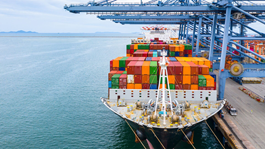On 16 July 2021, China’s nationwide carbon trading officially kicked off at the Shanghai Environment & Energy Exchange (SEEE). According to the data released by SEEE, the first day’s trading ended with over 4 million tons of CEAs (see below) worth RMB 210 million (approx. USD 32 million) changing hands. The price closed at RMB 51.23 (USD 7.92) per ton, up 6.7% from its opening price. This benchmarks an important step for China in its efforts to realize its commitments under the Paris Agreement. President Xi Jinping announced in September 2020 that China will strengthen its 2030 climate target, hit peak emissions before 2030 and aim to achieve carbon neutrality before 2060.
We set out below a few points relating to China’s legal regime applicable to emissions trading on the national platform hosted at SEEE.
Evolution of carbon trading markets and the applicable legal regime
Carbon emissions allowances (CEAs) were initially permitted to trade in 2011, when the National Development and Regulatory Commission (NDRC) approved the trading of CEAs in local exchanges of seven provinces/cities in China (including Shanghai, Beijing, Tianjin, Chongqing, Hubei Province, Guangdong Province and Shenzhen) under a pilot program.
Under the pilot program, each approved local exchange can only trade CEAs held by covered carbon emission enterprises in the relevant local region and other qualified investors according to the rules of the relevant local exchange. For example, SEEE can only host trading of CEAs registered at SEEE (also known as SHEAs). CEAs in different exchanges cannot be traded on a cross-exchange basis, hence these local exchanges are all segregated markets.
In 2014 NDRC issued Interim Measures for the Administration of Carbon Emissions Trading (NDRC 2014 Measures), which were intended to have nationwide legal effect. However, in practice, as CEAs cannot be traded on a cross-exchange basis and only one additional location, -Fujian Province - has been added to the pilot program, the NDRC 2014 Measures have not been fully implemented.
In 2018, the Ministry of Ecology and Environment (MEE) was set up to play a key role in supervising the carbon emissions regime in China. According to Measures for the Administration of Carbon Emissions Trading (for Trial Implementation) issued by MEE which took effect from 1 February 2021 (the MEE 2021 Measures), MEE was formally authorised to establish a national platform to register CEAs and a national platform to trade CEAs (collectively, the National CEA Platforms).
With MEE becoming the major regulator of the carbon emissions regime in China, NDRC’s role in this respect has gradually been superseded by MEE and NDRC abolished the 2014 NDRC Measures in April 2021.
In May 2021, MEE issued three operational rules with respect to the registration, trading and settlement of CEAs at national level, aiming at implementing the MEE 2021 Measures.
It is also worth noting that, in March 2021, MEE issued the draft Interim Regulations on the Management of Carbon Emissions Trading Management (Revised Draft) (Interim Regulations) for public consultation, the promulgation of which will require approval by the State Council. If officially promulgated, the Interim Regulations will override/replace the MEE 2021 Measures (and the relevant operational rules) mentioned above to regulate the nationwide carbon emissions trading market in China. The draft Interim Regulations have introduced some changes to the current rules, so the legal regime governing national carbon emissions trading may continue to evolve in the foreseeable future.
Parties and products eligible to trade on the National CEA Platforms
According to the relevant MEE’ notice, China Hubei Carbon Emissions Exchange in Wuhan City, Hubei Province is authorised to serve as the national CEA registration platform and SEEE is authorised to serve as the national CEA trading platform (National CEA Trading Platform), until the official National CEA Platforms are established. It is unclear how long it will take to establish the official National CEA Platforms and how they will differ from the current situation.
According to the MEE 2021 Measures and the operational rules, the following parties are qualified to trade CEAs at the National CEA Platforms:
(a) Key emission entities (the KEEs) in certain designated industries; and
(b) Qualified entities and individuals.
The designated industries may include power, petrochemicals, chemicals, construction materials, iron and steel, nonferrous metals, paper and domestic civil aviation, but for the initial stage, the National CEA Platforms will only be open to the power industry. According to a notice from MEE on 30 December 2020, 2225 enterprises in the power industry throughout China have been identified as KEEs, whose CEAs (currently allocated by the provincial counterparts of MEE) are able to be traded on the National CEA Platforms.
For the initial stage after the launch of the National CEA Trading Platform, only KEEs in the power industry will be eligible to trade on the platform, and not other qualified entities or individuals.
The only product for trading on the National CEA Trading Platform at the initial stage of its launch will be CEAs for spot trading, with no CCERs (as defined below), carbon forwards or any other product.
Co-existence with local platforms
After the launch of the National CEA Trading Platform, the local regional carbon markets mentioned above will operate in parallel to the national market in the short term, and are expected to be integrated into the national market over the medium to long term when the National CEA Platforms become fully operational. Meanwhile, KEEs which have participated in the National CEA Trading Platform will no longer trade CEAs on any of the regional platforms.
Like other regional exchanges under the pilot program, SEEE will continue operating its current regional platform (SEEE Local Platform) governed by its local rules. The SEEE Local Platform and the National CEA Trading Platform, although both operated by SEEE, will be separate for trading purposes, and SEEE’s current rules applicable to the trading activities on the SEEE Local Platform do not apply to the National CEA Trading Platform. The development of the National CEA Trading Platform will draw the experiences/lessons from the operation of regional platforms in the last decade under the pilot program. We therefore provide a brief introduction of the SEEE Local Platform below.
SEEE was established in 2008, and was one of the seven local exchanges approved by NDRC to trade SHEAs on a trial basis from 2011.
In 2012, NDRC issued the Interim Measures for the Administration of Voluntary Greenhouse Gas Emissions Reduction Transactions, allowing Chinese entities to file and register voluntary emissions reduction projects with NDRC. The reduced emissions generated from these projects are recognised as “China Certified Emissions Reductions (CCERs)”, which are tradable in addition to CEAs. NDRC issued a letter in 2013, expressly permitting SEEE to operate the trading of CCERs.
SEEE also operates SHEA forwards, pledge of SHEAs, borrowing of SHEAs and pledge of CCERs.
Under SEEE’s rules applicable to the SEEE Local Platform, only members admitted to SEEE may trade SHEAs (and other qualified products such as CCERs) at SEEE. Members can be either qualified carbon emission enterprises holding SHEAs or qualified institutional investors.
Members of SEEE are divided into proprietary trading members and general members. A proprietary trading member can only trade at SEEE in its own name, but a general member can trade at SEEE in its own name and also on behalf of its clients. An institutional investor who wants to trade SHEAs (and other products) at SEEE either as a member or through a general member must satisfy various requirements.
The trading rules of the local exchanges under the pilot program are all slightly different. For example, China Emissions Exchange (CEEX) is a local exchange based in Guangzhou, which trades CCERs and Guangdong Emissions Allowances (GDEAs). In addition to institutional investors, CEEX also accepts qualified individuals who either become members of CEEX to trade directly or engage a general member of CEEX to trade on their behalf. As well as GDEAs and CCERs, CEEX offers other products, such as, the repurchase of GDEAs.
What the future holds
It is clear that the China has taken a reasonably conservative approach in launching the National CEA Trading Platform by limiting the eligible participants and the types of tradable products. However, if the initial stage goes smoothly and actual operation turns out to be successful, the following further steps may be taken, in the medium or long term, which will help to realize the huge potential in China’s carbon trading market:
- KEEs in other designated industries will be gradually permitted to participate;
- Qualified institutional investors will be permitted to participate; and
- More diversified products will be permitted to trade.
The legal regime governing China’s carbon trading will continue to evolve, including the promulgation of the Interim Regulations currently anticipated by the market, as well as new legislations and/or trading rules setting out the legal/operational parameters for these further steps.







